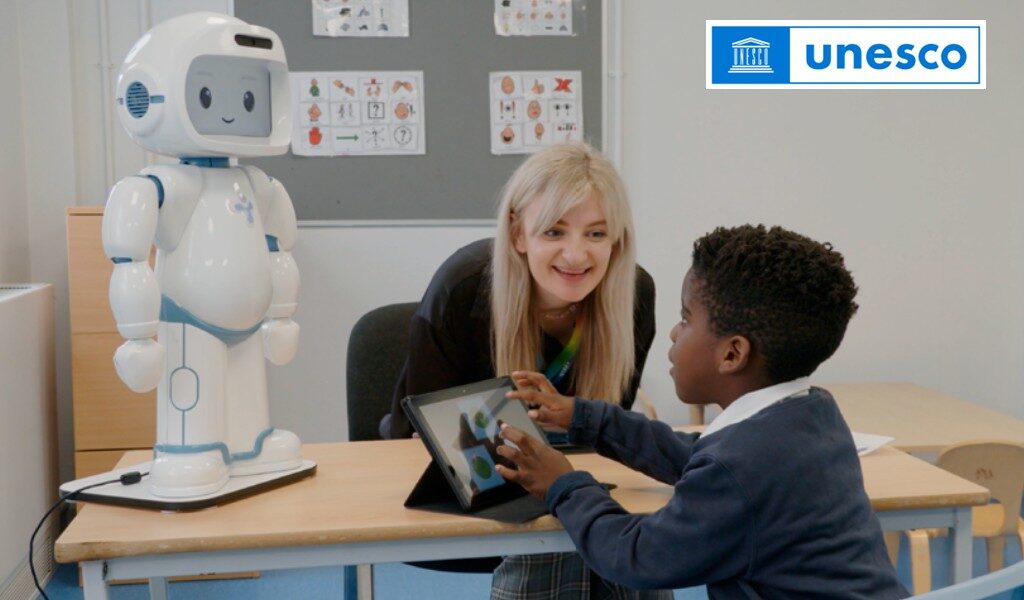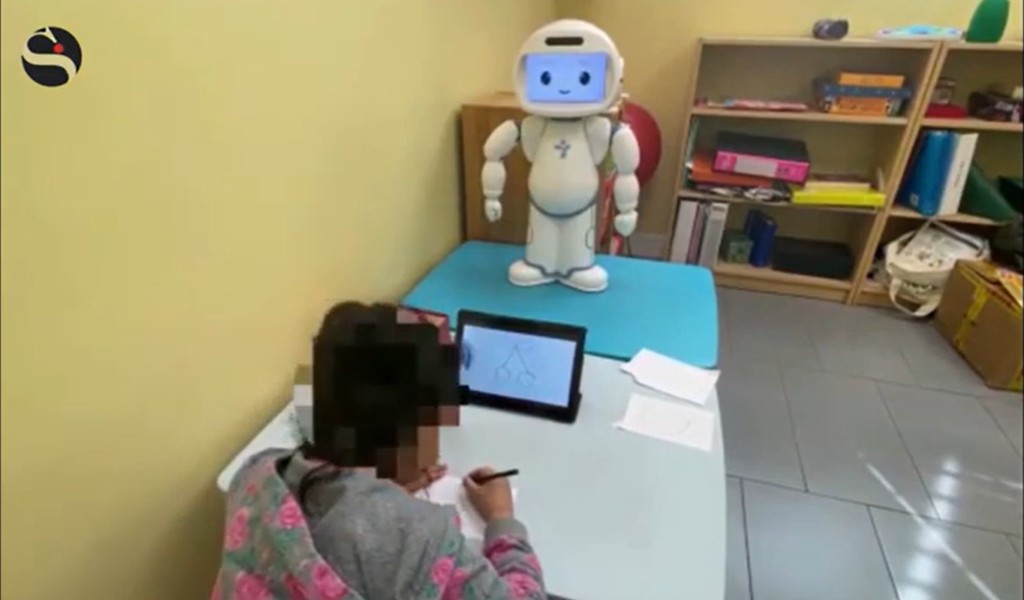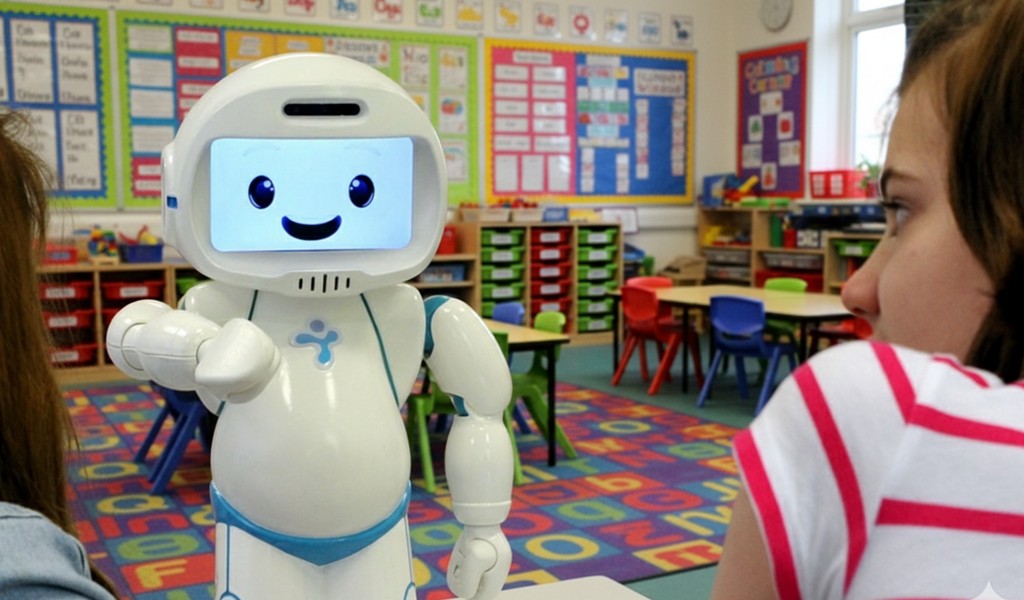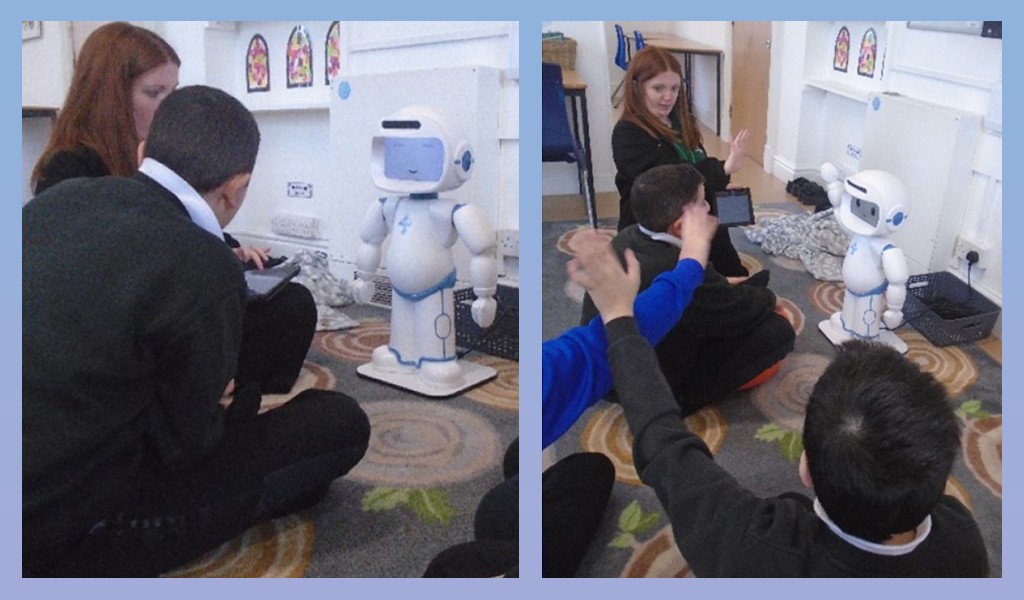We are proud to announce that QTrobot by LuxAI has been featured in UNESCO’s latest report, “Innovative Technologies for Inclusive Education: A Review of Best Practices from Global Resource Centres.” The report highlights Rodney House School in Manchester, UK, as a case study of best practice, showcasing several years of successful use of QTrobot in supporting students with special educational needs.
Rodney House School: Real-World Impact with QTrobot
Rodney House School is a specialist setting for children with complex needs and autism. Rodney House School introduced QTrobot to their classrooms to enhance learning for students who face significant communication and social challenges. At Rodney House, staff have been actively using QTrobots in their daily activities and special educational, psychological and communication practices. Several years into using QTrobot, the school shared key insights on the robot’s transformative role with UNESCO.
Use of QTrobot with students:
Many of the centre’s students find it difficult to communicate. QTrobot has excellent games that promote both expressive and receptive language. Students who find social communication difficult might use a little communication to request something. And after interacting with QTrobot, two out of three children in one particular class now come into the classroom and say ‘Hello’ and ‘Goodbye’.
Unpredictability can make children very nervous. For example, sometimes adults might look different than they did the day before because their hair is different, or they might smell different. For very sensory children at Rodney House, interacting with QTrobot helps them feel much calmer and improves their overall readiness to learn. They know what to expect from the robot; there are no surprises. This in turn helps the teachers gain precious trust between themselves and the children.
One of the school’s big success stories emerged from the Tiger class, which comprises children with more extensive abilities. A boy in that class struggles with regulating and controlling his emotions, especially anger. He has been practising his deep breathing with QTrobot for some time, and now when he feels angry, he says, ‘I want to work with the robot.’
When the robot symbol is shown as the children enter the classroom, their faces light up and they rush in. These children are normally difficult to engage in structured learning, but teachers have seen their attention span extend noticeably after they begin to work with the QTrobot. Within as little as six weeks, children might progress from staying in the classroom for only a few minutes to as long as fifteen minutes, which represents significant progress.
QTrobot’s consistent style of interaction — clear, repetitive, and non-judgmental — enabled children to feel more at ease, allowing them to participate, practice new skills, and make measurable progress.

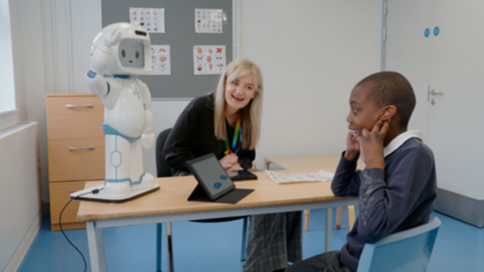
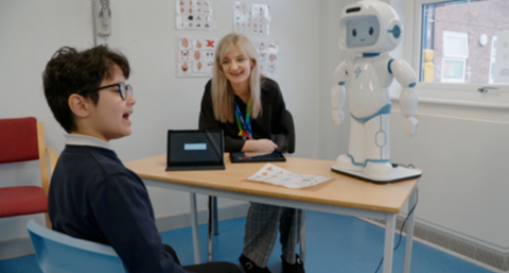
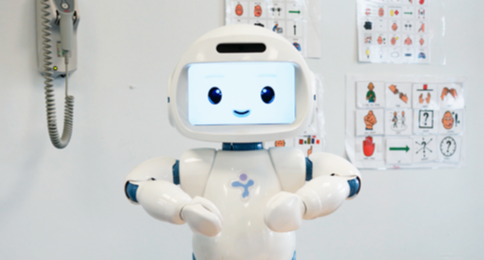
Use of QTrobot for teachers:
Teachers found that QTrobot’s user-friendly platform and structured lessons required little additional preparation, making it easy to bring cutting-edge support directly into the classroom without adding to their workload.
QTrobot is very user-friendly, easily operated by both teachers and teaching assistants. A ten-minute initial briefing is enough to learn how to use it safely and meaningfully. Teachers at Rodney House explained that QTrobot is quite intuitive to use and that not much can go wrong. They see it as a fantastic tool to have in the teacher toolkit, especially for educators who work with children with SEN and need to be creative. Every child is an individual, and QTrobot can be used in many ways to inspire them and support their readiness to learn.
QTrobot’s quick impact on student motivation and learning made teachers even more enthusiastic about adopting technology-driven interventions as part of their inclusive education strategies.
Why UNESCO Recognized QTrobot
The UNESCO report praises QTrobot as a model of how assistive technology can:
Enhance communication and interaction skills in students with autism and complex needs.
Provide structured, personalized, and accessible learning environments.
Empower educators to deliver high-quality, inclusive education with minimal training burden.
QTrobot’s successful long-term use at Rodney House School demonstrates that when educational technology is designed for real-world classrooms, it can create lasting change.
A Milestone for Inclusive Education
We are honoured that UNESCO has recognized QTrobot’s impact on inclusive education through the real experiences of teachers and students at Rodney House School. At LuxAI, we remain deeply committed to supporting educators, therapists, and families by delivering innovative solutions that empower every learner to thrive.
Reference to the UNESCO article
https://unesdoc.unesco.org/ark:/48223/pf0000392300.locale=en
